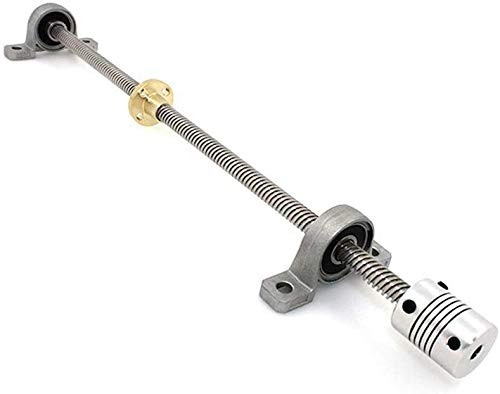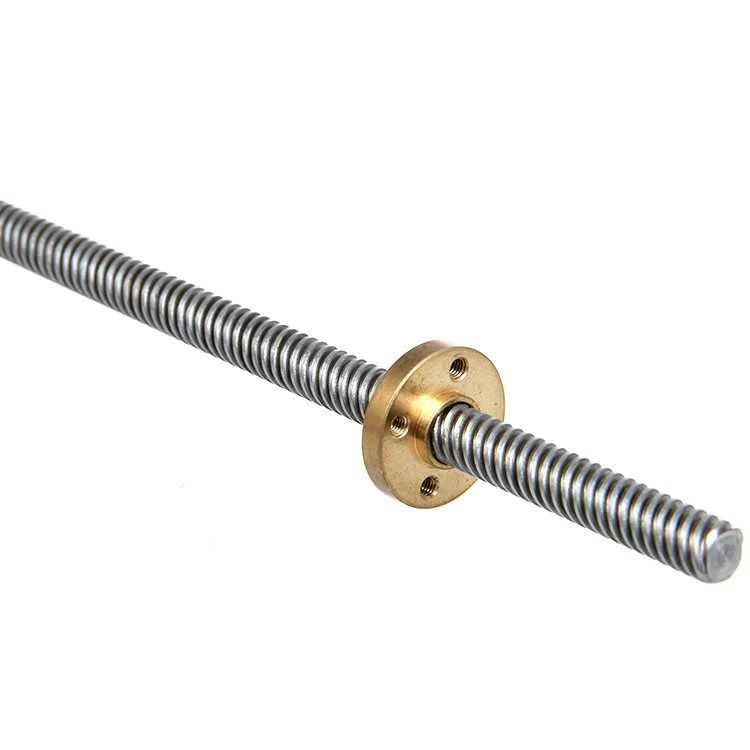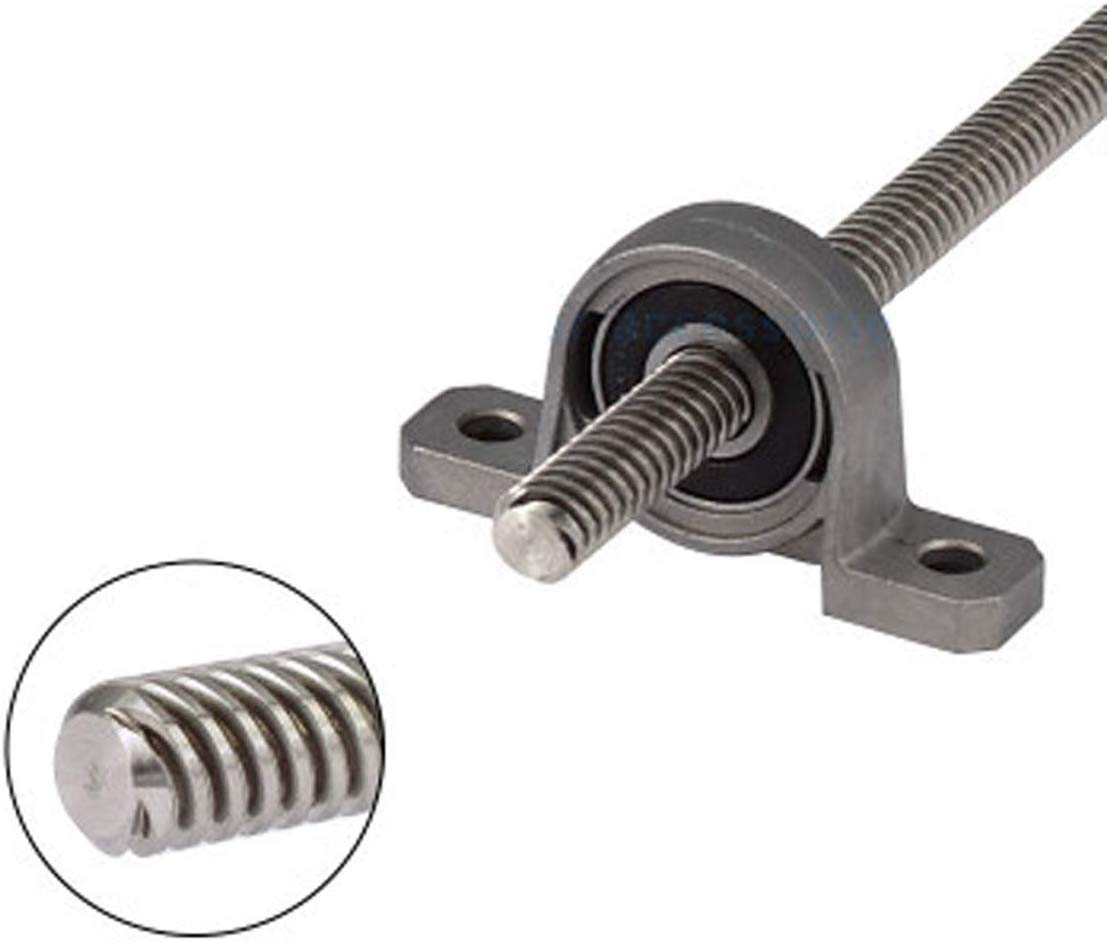Product Description
UP GOLD Automation Technology Co., LTD.
Company Profile
UP GOLD Automation Technology Co., LTD., independent brand, NYZ and UP. The main products are linear guide rail, slider, ball screw, linear optical shaft, linear bearing, machine tool spindle special P4 high precision bearings and accessories, with advanced production equipment and testing instruments to ensure the accuracy of each product. Precision products will provide higher value to the equipment. The company promises to sell each product, warranty period of 24 months, 24 hours after-sales service. Provide professional OEM cooperation model. At the same time, the company agents international first-line brands HIWIN, TBI, NSK,THK. Sufficient resources to ensure every customer needs.
Quality is the life of enterprise. We are committed to improving the quality of our products and services. Advanced equipment, skilled technical workers, scientific testing instrument and strict quality control, all of these factors is the key to our development and growth in the intense market competition.
Contact us now to realize the benefits of sourcing from our company. We insist to return new and old customers with best quality, fastest delivery time and most perfect after service. Your satisfaction is our goal.
Product Description
Ball Screw
Ball screw is made of screw, nut and ball.
The function is to turn the rotary motion into liner motion, which is a further extension and development of ball screw.
The significance of this development is to move into a rolling bearing from sliding action; With little friction, ball screws are widely used in various industrial equipment and precision instruments.
| Product name | High Quality CNC Turning Stainless Steel Lead Ball Screw |
| Nut Number | HTY8239 |
| Nut Type | Circulator |
| Dia | 12, 16, 20, 25, 32, 40, 50, 63, 80mm |
| Lead | 5, 6, 8, 10, 16, 20, 25, 32, 40mm |
| Accuracy | C6,C5, |
| Nut style | Single or double |
| End processing | according to customer’s drawing |
| Delivery time | 15days |
| Feature | High speed, low noise |
| Production Capacity | 10000 PCS/ Month |
| OEM/ODM Availability | YES |
Application:
1.Medical industry
2.Lithium battery industry
3.Solar photovoltaic industry
4.Semi conductor industry
5.General industry machinery
6.Machine tool
7.Parking system
8.High-speed rail and aviation transportation equipment
9.3C industry etc.
Detailed Photos
Our Products
Technology and Equipment
Packaging & Shipping
01 Industrial packaging: Plastic tube + Carton + Pallet
02 Commercial packaging: Plastic bag + Kraft paper+ Carton+ Pallet
03 Original packing+ pallet
Our Advantages
*Two-year warranty, replace instead of repair.
*12 Months Warranty
*Fast Delivery
*24 hours on line service
*Professional Team
FAQ
Q: What is the producing process?
A: Production process including raw material cutting, machine processing,grinding, accessories cleaning, assemble, cleaning, oil coating,cover pressing, testing, package.
Q: How to control the products quality?
A: Combining advanced equipment and strict management, we provide high standard and quality ball bearings for our customers all over the world.
Q: What is the transportation?
A: If small quantity, we suggest to send by express, such as DHL, UPS, FEDEX. If large amount, by air or sea shipping.
Q: How about the shipping charge?
A: We will be free of domestic shipping charge from your freight forwarder in China.
Q: Can you provide OEM service?
A: Yes, we provide OEM service. Which means size, quantity, design,packing solution, etc will depend on your requests; and your logo will be customized on our products.
Q: Could you tell me the delivery time of your goods?
A: Generally it is 3-5 days if the goods are in stock. or it is 15-20 days if the goods are not in stock, it is according to the quantity.
Q: What about the packaging of your products?
A: Normally we use standard commercial package, we also have our own brand packing or customized package as per customers’ requests.
/* January 22, 2571 19:08:37 */!function(){function s(e,r){var a,o={};try{e&&e.split(“,”).forEach(function(e,t){e&&(a=e.match(/(.*?):(.*)$/))&&1
| Precision: | C5 |
|---|---|
| Screw Diameter: | 11-20mm |
| Flange: | With Flange |
| Customization: |
Available
|
|
|---|
.shipping-cost-tm .tm-status-off{background: none;padding:0;color: #1470cc}
| Shipping Cost:
Estimated freight per unit. |
about shipping cost and estimated delivery time. |
|---|
| Payment Method: |
|
|---|---|
|
Initial Payment Full Payment |
| Currency: | US$ |
|---|
| Return&refunds: | You can apply for a refund up to 30 days after receipt of the products. |
|---|

What maintenance practices are recommended for lead screws to ensure optimal functionality?
Maintaining lead screws is crucial for ensuring their optimal functionality and longevity. Regular maintenance practices can help prevent issues such as wear, backlash, and premature failure. Here are some recommended maintenance practices for lead screws:
- Cleaning: Regularly clean the lead screw and nut to remove dirt, debris, and contaminants that can cause friction and wear. Use a soft brush or cloth to gently wipe away any buildup. Avoid using abrasive materials or harsh chemicals that can damage the surfaces.
- Lubrication: Proper lubrication is essential for reducing friction and ensuring smooth operation of the lead screw. Follow the manufacturer’s recommendations for lubrication intervals and use the appropriate lubricant for the specific application. Apply the lubricant evenly along the entire length of the screw, ensuring that it reaches the threads and engages with the nut. Be careful not to over-lubricate, as excess lubricant can attract more dirt and debris.
- Inspection: Regularly inspect the lead screw for any signs of wear, damage, or misalignment. Look for excessive backlash, unusual noise during operation, or visible signs of wear on the threads. Check the nut for any signs of wear, such as uneven or flattened threads. If any issues are detected, take appropriate measures to address them, such as replacing worn components or realigning the system.
- Tension Adjustment: If the lead screw system utilizes tensioning mechanisms, such as adjustable tension nuts or spring-loaded devices, periodically check and adjust the tension as needed. Proper tension ensures proper engagement between the screw and nut, minimizing backlash and maintaining accurate positioning.
- Protection: Protect the lead screw from environmental factors that can contribute to corrosion or damage. If the lead screw is exposed to moisture, chemicals, or extreme temperatures, consider implementing protective measures such as using covers, seals, or coatings to shield the screw and nut. This is particularly important for lead screws operating in outdoor or harsh industrial environments.
- Training and Operator Practices: Provide proper training to operators who work with lead screw systems. Ensure they understand the correct operating procedures, including any specific maintenance requirements. Encourage operators to report any abnormalities or issues promptly to prevent further damage or downtime.
By following these maintenance practices, lead screw systems can operate optimally and have a longer service life. Regular cleaning, appropriate lubrication, thorough inspection, tension adjustment, protection from external factors, and proper operator practices are all essential for ensuring the optimal functionality and reliability of lead screws.

Can you provide insights into the importance of proper lead screw installation and alignment?
Proper lead screw installation and alignment are crucial for ensuring the optimal performance, longevity, and reliability of lead screw systems. The installation and alignment process directly affects the system’s accuracy, efficiency, and overall functionality. Here are some key insights into the importance of proper lead screw installation and alignment:
- Accuracy and Precision: Proper installation and alignment are essential for achieving accurate and precise linear motion. Misalignment or incorrect installation can introduce angular errors, axial misalignment, or parallelism issues, leading to positioning errors and reduced system accuracy. By following the manufacturer’s guidelines and using appropriate alignment tools, the lead screw can be installed in a way that minimizes misalignment and ensures precise movement and positioning.
- Load Distribution: Correct alignment during installation helps distribute the load evenly along the length of the lead screw. Proper alignment ensures that the load is shared uniformly between the screw and the nut, preventing excessive stress on specific areas. Improved load distribution reduces the risk of premature wear, deformation, or failure of the lead screw and enhances the overall durability and load-carrying capacity of the system.
- Backlash and Efficiency: Proper installation and alignment contribute to minimizing backlash in lead screw systems. Backlash, which refers to the clearance between the screw and nut, can negatively impact system performance, precision, and efficiency. Misalignment can exacerbate backlash issues, resulting in reduced repeatability and accuracy. By aligning the lead screw correctly, the backlash can be minimized, improving system efficiency and eliminating potential sources of error.
- Reduced Friction and Wear: Accurate installation and alignment help reduce friction and wear between the lead screw and nut. Misalignment can cause the screw and nut to rub against each other unevenly, leading to increased friction, accelerated wear, and reduced system lifespan. Proper alignment ensures that the mating surfaces are in optimal contact, minimizing friction and wear, and improving the overall efficiency and longevity of the lead screw system.
- System Stability and Vibration: Proper installation and alignment contribute to system stability and reduced vibration. Misalignment can introduce vibrations, resonances, or oscillations in the lead screw system, affecting the overall performance and potentially causing excessive noise or system instability. By aligning the lead screw correctly, the system’s natural frequencies can be maintained within acceptable limits, improving stability, reducing vibrations, and enhancing the system’s overall operation.
- Maintenance and Service: Proper installation and alignment simplify maintenance and service procedures. When lead screws are installed and aligned accurately, routine maintenance tasks such as lubrication, inspection, or component replacement can be performed more efficiently. Access to critical components is improved, and troubleshooting potential issues becomes easier, reducing downtime and enhancing the overall serviceability of the lead screw system.
In conclusion, proper lead screw installation and alignment are of utmost importance for achieving optimal performance, accuracy, efficiency, and durability of lead screw systems. Accurate alignment minimizes positioning errors, improves load distribution, reduces backlash and friction, enhances system stability, and simplifies maintenance procedures. By following manufacturer guidelines and utilizing appropriate alignment techniques, the benefits of proper installation and alignment can be realized, ensuring the long-term reliability and performance of lead screw systems.

How does a lead screw differ from other types of screws in terms of design and functionality?
A lead screw differs from other types of screws in terms of its design and functionality. Here’s a detailed explanation of the distinctions between lead screws and other screw types:
- Thread Design: Lead screws have a helical thread design, meaning the threads wrap around the screw’s cylindrical shaft in a continuous spiral. This helical thread allows for the conversion of rotary motion into linear motion. In contrast, other types of screws, such as machine screws or wood screws, typically have a straight or tapered thread design suited for fastening or joining applications.
- Linear Motion Conversion: The primary function of a lead screw is to convert rotary motion into linear motion or vice versa. It achieves this by utilizing the engagement between the helical threads on the screw and the matching threads on the nut. This capability makes lead screws suitable for applications requiring precise positioning, actuation, or adjustment of components along a linear path. In contrast, other screws are primarily used for fastening, joining, or securing objects together.
- Precision and Control: Lead screws offer precise control over linear movement due to their thread pitch and the ability to rotate the screw with precision. The pitch determines the linear distance the nut will travel for each revolution of the screw. This feature makes lead screws well-suited for applications that demand accurate positioning or adjustment. In contrast, other screws are not designed with the same level of precision or control over linear motion.
- Load Handling: Lead screws are designed to handle both axial loads (tension or compression forces) and torque. The helical threads and the engagement between the screw and nut distribute the load over a larger surface area, allowing lead screws to support and transfer significant loads. Other screw types, such as machine screws or wood screws, are primarily used for fastening and may not have the same load-bearing capabilities as lead screws.
- Applications: Lead screws find applications in various mechanical systems that require precise linear motion, such as CNC machines, 3D printers, robotic systems, and adjustable mechanisms. They are commonly used for positioning, actuation, or adjustment purposes. Conversely, other types of screws serve different purposes, such as machine screws used for fastening components together, wood screws for joining wooden materials, or self-tapping screws for creating threads in materials like metal or plastic.
Overall, the key differences between lead screws and other types of screws lie in their thread design, their ability to convert rotary motion to linear motion, the precision and control they offer, their load-handling capabilities, and the specific applications they are designed for. Understanding these distinctions is essential when selecting the appropriate screw type for a particular mechanical application.


editor by Dream 2024-04-26